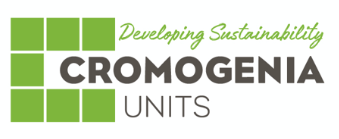At Cromogenia Units, we continue to advance in our commitment to sustainable innovation, offering the chemical and leather sectors cutting-edge solutions that respect the environment without compromising performance. After more than two years of research and development, our R&D team and applications laboratory present a new product that represents a turning point in the field of retanning: RETANAL XDW, a sulfone-type synthetic retanning agent designed to maintain excellent technical performance while ensuring an extremely low bisphenol content.
What are bisphenols and where can they be found?
Bisphenols are organic chemical compounds that contain two hydroxyl functional groups. Due to their chemical nature, they are used to generate polymers and are therefore widely used in the chemical industry.
There are many types of bisphenols: bisphenol A, F, S, AP, AF, etc. The term bisphenol (BP) refers to the hydroxyl functional group, while the accompanying letter indicates the reagent used in the reaction (for example, BPA is obtained by reacting two phenols with acetone). Most bisphenols are based on the diphenylmethane group, except for bisphenol S, P, and M.

difenilmetano (Figura 1)
Bisphenols in retanning products
Bisphenols can also be found in a wide range of products and, specifically in the tanning industry, they appear in some synthetic retanning agents. The bisphenols present in retanning products are bisphenol S (BPS) and bisphenol F (BPF). Bisphenol A is not found in retanning agents.

bisphenol S (BPS

bisphenol F (BPF)
Regulations and changes in the chemical sector
On January 17, 2023, the European Chemicals Agency (ECHA) added a new group of substances to the list of candidates for Substances of Very High Concern (SVHC). Among them was bisphenol S, used in certain industrial products and, from that moment on, requiring notification in the safety data sheet when found at residual concentrations above 1000 ppm.
Although this classification does not automatically imply a ban or restriction on bisphenol S, it does represent a significant change in how manufacturers must manage information related to this substance. Bisphenol F, while also used in the tanning industry, is not yet subject to any regulatory restriction.
Cromogenia’s commitment
In light of this new regulatory scenario and with a clear vision for the future, Cromogenia Units has worked intensively on optimizing our formulas and production processes. Our objective is to significantly reduce the presence of free bisphenols in retanning agents, either through strict control of reaction parameters or by minimizing impurities that may appear during synthesis.
This effort reflects both our commitment to serving our customers and our dedication to environmental responsibility. We aim to offer the market high-quality products that meet the highest standards of safety and sustainability, anticipating both industry needs and future regulations.
RETANAL XDW: a qualitative leap in synthetic retanning
The result of this research process is RETANAL XDW, a sulfone-type retanning agent that incorporates innovative chemistry, specifically designed to ensure an extremely low content of bisphenols, particularly bisphenol S and bisphenol F.
Despite this reduced bisphenol content, the product maintains the same technical properties as a standard sulfone, allowing customers to benefit from a more sustainable solution without sacrificing quality or performance. Its main features include:
-
High tanning capacity, ensuring efficient results in retanning processes.
-
Excellent lightfastness, guaranteeing greater durability and resistance in finished products.
-
Whitening effect, improving the visual appearance and uniformity of the treated leather.
-
Good filling effect without stiffening, preserving the flexibility and comfort of the material.
With these benefits, RETANAL XDW establishes itself as an effective and responsible alternative, aligned with new market demands and the growing concern for minimizing the environmental impact of chemical products.

